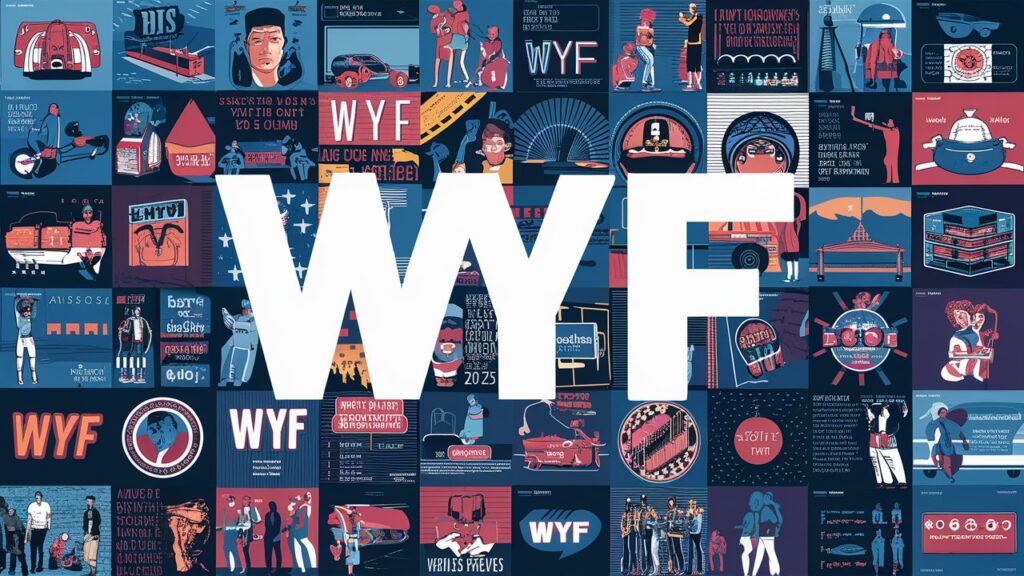Introduction
In the ever-evolving landscape of internet slang and text-based communication, acronyms like WYF have carved out a niche in casual conversations. Whether you’ve stumbled across it in a text message, social media comment, or meme, understanding its meaning and context is essential for navigating modern digital interactions. This article dives deep into the origins of WYF, explores its various applications, and examines its cultural significance. By the end, you’ll not only grasp what WYF stands for but also appreciate how such shorthand reflects broader trends in language and communication.
Breaking Down the Acronym: What Does WYF Stand For?
WYF is an abbreviation for “Where You From?”—a question often used to inquire about someone’s geographic or cultural background. While the phrase itself is straightforward, the acronym’s popularity stems from its efficiency in digital communication, where brevity is prized. Unlike similar acronyms like WYD (“What You Doing?”) or WBU (“What About You?”), WYF specifically targets identity and origin, making it a common icebreaker in online interactions.
The phrase is typically casual and may carry different connotations depending on context. For example, in a friendly chat, it might signal curiosity about shared experiences, while in a confrontational setting, it could imply skepticism about someone’s authenticity. Understanding these nuances is key to interpreting WYF correctly.
The Evolution of WYF in Digital Communication
The rise of WYF parallels the growth of internet culture and the need for rapid, concise exchanges. Early internet forums and SMS messaging laid the groundwork for abbreviations, but platforms like Twitter, TikTok, and Instagram accelerated their adoption. WYF emerged as part of this trend, particularly in communities where discussions about identity, belonging, and regional pride are prevalent.
Interestingly, WYF is often used in spaces where users assume anonymous or pseudonymous identities. For instance, in gaming communities or social media debates, asking WYF can serve as a way to gauge someone’s credibility or relate to their perspective. Over time, the acronym has also been infused with humor, appearing in memes where exaggerated stereotypes about regions or cultures are playfully mocked.
Common Contexts Where WYF is Used
1. Casual Conversations and Icebreakers
In one-on-one chats or group chats, WYF acts as a low-stakes conversation starter. For example, someone might drop WYF after bonding over shared interests to deepen the connection. Its informal tone makes it ideal for building rapport without seeming intrusive.
2. Social Media and Viral Content
On platforms like TikTok or Instagram, WYF frequently appears in comments or captions, especially under posts showcasing accents, traditions, or regional humor. A video of someone cooking a regional dish might prompt comments like, “WYF? This looks 🔥!”—blending curiosity with praise.
3. Confrontational or Skeptical Exchanges
In debates or arguments, WYF can take on an edge. If someone makes a controversial claim about a culture or event, a reply of “WYF though?” might challenge their authority on the topic. This usage walks a fine line between genuine inquiry and subtle confrontation.

Why WYF Resonates in Modern Culture
The staying power of WYF lies in its versatility and reflection of societal values. In a globalized world where digital interactions often erase geographic boundaries, people increasingly seek to anchor conversations in shared identities. WYF taps into this desire by prompting discussions about heritage, upbringing, and community.
Moreover, the acronym embodies the internet’s preference for speed and efficiency. Younger generations, in particular, prioritize quick, relatable exchanges over formal dialogue. WYF fits seamlessly into this paradigm, offering a way to connect or challenge without lengthy explanations.
Frequently Asked Questions About WYF
1. Is WYF rude or offensive?
Not inherently. Its tone depends entirely on context. In friendly chats, it’s harmless, but in heated debates, it can come across as confrontational. Always consider the relationship and setting before using it.
2. How should I respond if someone asks me WYF?
A straightforward answer (e.g., “NYC, you?”) works fine. If you prefer privacy, a humorous deflection like “Why? Planning to visit? 😏” keeps the mood light.
3. Are there alternatives to WYF?
Yes! Phrases like “Where are you based?” or “What’s your background?” achieve similar goals but feel slightly more formal. Acronyms like WYA (“Where You At?”) are also used interchangeably.
4. Can WYF be used professionally?
Avoid it in formal emails or workplace communication. Stick to complete sentences like “May I ask where you’re located?” to maintain professionalism.
5. Does WYF have regional variations?
In some communities, WYF is paired with emojis (e.g., 🌍 or 🏠) to emphasize the question. Non-English languages also have equivalents, such as “De dónde eres?” in Spanish.
Conclusion
WYF is more than just a quirky acronym—it’s a linguistic tool that mirrors the dynamics of modern communication. From fostering connections to probing authenticity, its applications reveal how digital natives navigate identity and belonging in a fragmented world. As internet slang continues to evolve, staying informed about terms like WYF ensures we remain engaged, empathetic, and culturally aware participants in online spaces. Next time someone hits you with a WYF, you’ll know exactly how to decode—and respond to—the question behind the letters.
Got more questions about internet slang? Drop a “WYF” in the comments, and let’s keep the conversation going! 🚀
